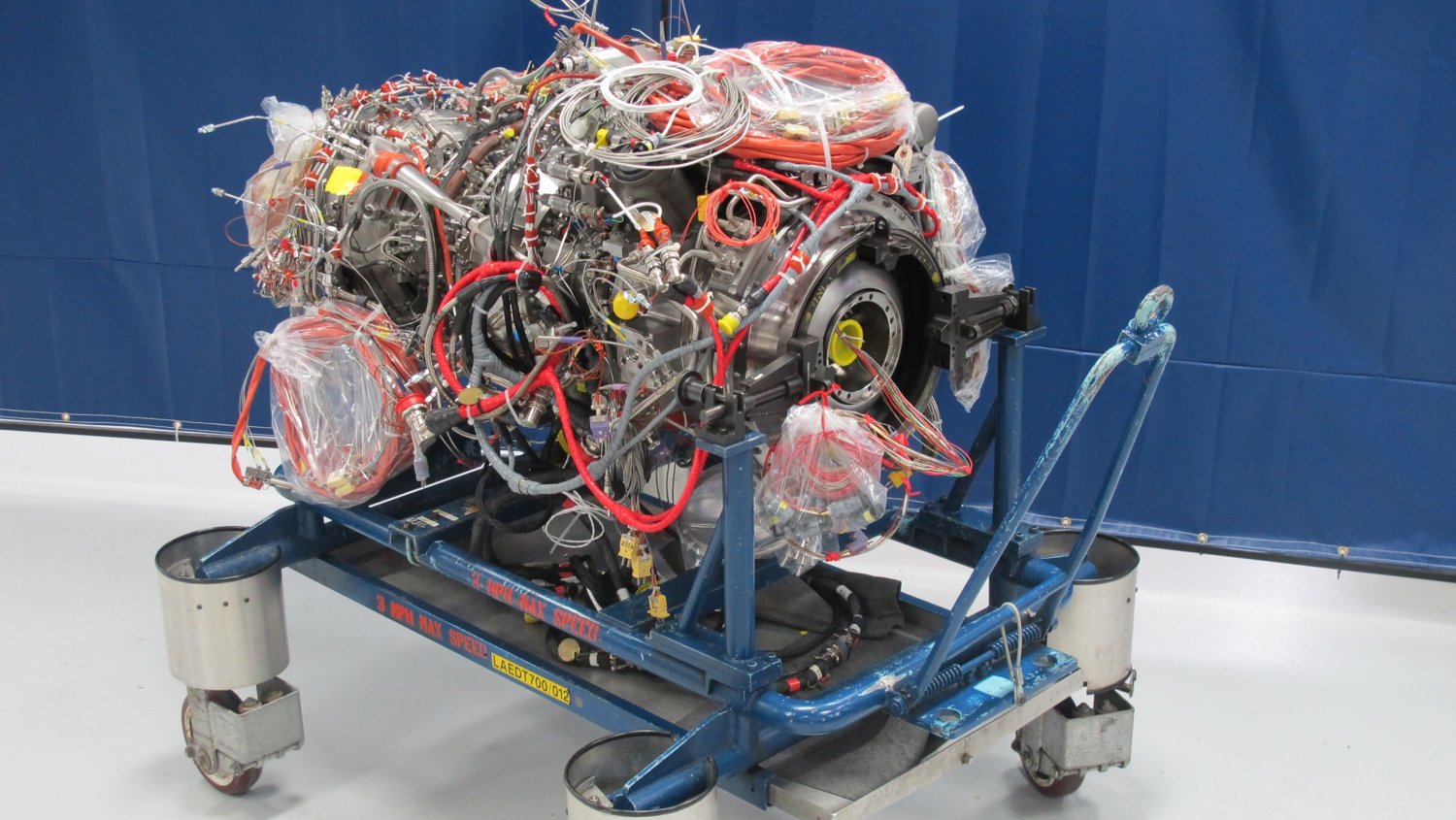
GE’s prototype of its T901 turbine, selected by the Army for its Improved Turbine Engine Program (ITEP). (GE)
WASHINGTON — The Army has delivered the first two advanced engines for the service’s Future Attack Reconnaissance Aircraft (FARA) to competitors Bell-Textron and Sikorsky after an approximately year-long delay, the Army announced Monday.
The deliveries of the T901 engines were executed simultaneously on Oct. 20, according to an Army press release, paving the way for ground runs to start in the second quarter of fiscal 2024 and flight tests to begin in the fourth quarter of FY24. Bell is offering its 360 Invictus for the closely watched FARA program, whereas Sikorsky’s bid is dubbed RAIDER X.
“The ITEP delivery is a major milestone for FARA and the Bell 360 Invictus competitive prototype,” Jayme Gonzalez, Bell’s program manager for FARA, said in a Monday press release. “Now that we have received the engine, we are ready to begin working toward ground runs and other necessary preparations before first flight later next year.”
Andy Adams, Sikorsky’s vice president for future vertical lift, said in a statement today that “Lockheed Martin’s model-based systems engineering approach gives the Sikorsky team confidence in this final phase of the RAIDER X build which brings us one step closer to completing this weapon system that will match the rapid pace of the reconnaissance mission.” (Sikorsky is a subsidiary of Lockheed Martin.)
Delivery of the T901 powerplants, developed by GE Aerospace, was delayed by about a year as the engine maker wrestled with supply chain disruptions. An Army official estimated earlier this year that the first engines might not arrive until early 2024, though the service subsequently announced Oct. 4 that the engines would be sent to the two vendors by the end of the month.
At the recent Association of the United States Army conference, an Army official additionally stated that the FARA program’s analysis of alternatives (AoA) would wrap up by the end of this year. Officials have said the AoA is needed for the program’s milestone B decision, with lawmakers also pressuring the service to produce it. However, the Army’s acting program executive officer for aviation Rodney Davis said at the AUSA conference that the engine development and AoA are on “parallel” paths.
The T901 Improved Turbine Engine is meant to have 50 percent more horsepower and 25 percent better fuel efficiency, and will also replace some of the Army’s legacy powerplants. All AH-64E Apaches and UH-60M/V Black Hawk helicopters, currently powered by the T700 engine that first started flying Black Hawks in the 1970s, will have those engines swapped out for the T901, according to the Army. But delays with the T901 have pushed those plans back about two years, an official previously said. Boeing builds the Apache, whereas Sikorsky produces the Black Hawk.
As for FARA, the Army plans for the winning design to enter service in FY31.








